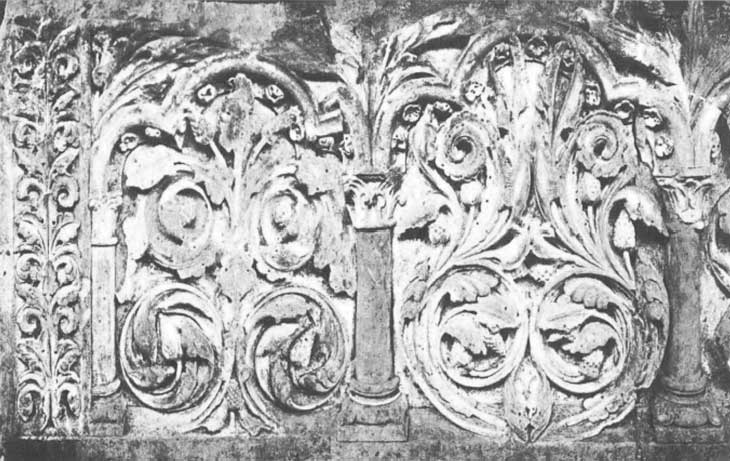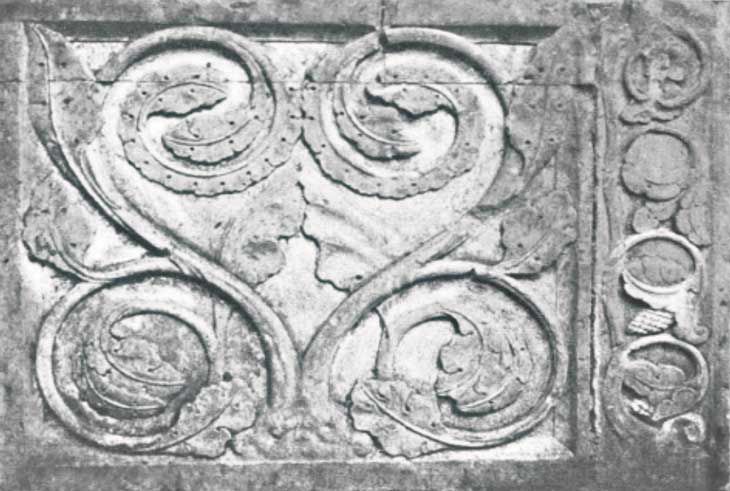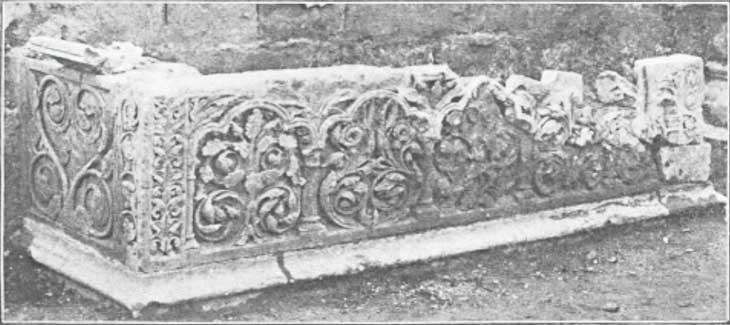Découverte du tombeau de Jean de Salisbury, évêque de Chartres
in Bulletin Monumental n° 69 – 1905, by Canon Métais, p. 501 to 504
doi : https://doi.org/10.3406/bulmo.1905.11849
https://www.persee.fr/issue/bulmo_0007-473x_1905_num_69_1
by Charles Métais (1855-1912)
Abbot, honorary canon of the diocese of the bishopric of Chartres. – Local historian and archivist, director of the “Revue des archives historiques du diocèse de Chartres”
(Source DataBNF)
« The abbey of Notre-Dame de Josaphat, near Chartres, was founded in 1117 by Geoffroy de Lèves, bishop of Chartres. The church was sacked by the Protestants in 1568 and 1591, during the sieges of that city.
According to the necrology and the chronicles of the abbey, it contained numerous burials, some of which were drawn by Gaignières. We know of six burials of bishops of Chartres, several of the abbots of the monastery and a number of lords of the region.
The founding bishop, Geoffroy de Lèves, † 1148, had his tomb in the choir, “on the side of the gospel, near the archway where we now go to the chapel Nostre-Dame”.
The first abbot, Girard, who died in the odor of sanctity, had his at the opposite, “on the side of the epistle, in front of the chapel of Saint-Nicolas”.
Goslein de Lèves, bishop of Chartres, † 1155, lay “in sacello B. Marie Virg. post cathedras nostri chori”.
Bishop Robert, † 1164, in the chapel of St. John the Evangelist.
John of Salisbury, † 1180, “cujus corpus jacet apud nos in capella Beate Marie”. – “His effigy is near the altar of the Virgin”.
Pierre de la Celle, † 1187, “in choro nostro ubi epistola legitur”.
Regnault de Mouçon, † 1217, ” in front of the altar of the Angels “.
In the choir, one could still see the tombstones of Goslein de Lèves, lord of Lèves and brother of the bishop Geoffroy, and of Lucie, his wife. “under the eagle”; – of Jean Pinart, abbot, † 1505, “behind the tomb of Girard”; – of André de Moutain, abbot, † 1521, “in medio templi choro, ante lampadem, ubi decantatur epistola”.
Philippe de Lèves, archdeacon of Dunois, † around 1216, was in the chapel of Sainte-Catherine; Gervais Vuain, abbot, † 1554, “in the chapel on the side of the epistle”; Gervasius, abbot, 13th century, “in medio navis” ; Michel de Bonnemain, abbot, † 1271, ” ante virgineum altare ” ; Philippe de Lèves, XIIIth century, ” at the big door of the church ” ; Garin de Friaize, † after 1231, in the choir, etc. , etc.
All this information had made us conceive the project of undertaking excavations in the site of the abbey church, in the current courtyard of the Aligre asylum. All that remained was a fragment of a slightly arched wall, supported by a vault above a fountain.
The first blows of the pickaxe revealed a semicircular column engaged in a wall, and soon after the opposite column. These were supported by a simple but elegant base, supported by beautifully designed claws.
Between these two columns, in a blocking that filled the hemicycle apse of the northern cross, an altar was uncovered, still intact, except for the upper table that had been removed. Between the altar and the wall was found a statue of the Virgin, from the Renaissance, decapitated and mutilated; finally, the wall on the Gospel side was indented up to a fairly large square hole in the vault, through which water was drawn from the sacred fountain for pilgrims.
Barely two meters from the left-hand column was discovered, leaning against the back wall of the transept, a splendid sarcophagus, marvelously sculpted, but which had probably been violated in 1568. It still contained numerous bones which we have carefully collected. The tomb of Jean de Salisbury, bishop of Chartres, is located in front of the altar of the Virgin, raised above the fountain dedicated to Mary, the goal of a very frequented pilgrimage in the Middle Ages, and decorated with a statue of the Virgin.
This sarcophagus was painted in red on the bottom of the panels, while the protruding sculptures, so delicate and gracefully carved, were gilded. The effigy of the bishop, which covered and closed the sepulchre, had been broken: we found only a single triangular fragment, where a very small lower part of the figure’s garment could be seen, protruding and whose hollow was painted red. The recumbent was thus in half-relief and as if chiseled in the fine liais stone whose edges were raised to frame it. This effigy having been broken by the violators of the sepulchre, Gaignières did not see it. At the beginning of the 17th century, when the monks had their church restored after it had been burned by the Huguenots, the floor was raised more than two feet and the sarcophagus was covered by the backfill, which saved it from a more complete ruin in 1793.
As the tomb was no longer visible, the monks made place an inscription which we found in Chartres and which we published (1 – Bulletin archéologique, 1898, p. 436).
This funerary monument dates back to the beginning of the 13th century, as indicated by the style of the superb foliage and arum fruit scrolls that decorate its walls. The five varied motifs on the southern side are framed by small columns and trefoil arches. The corner pilasters are decorated with narrower foliage and the small western side is decorated with stems and bunches of foliage of lesser relief, but whose design reveals a consummate artist.
Our desire would be to preserve this tomb, a true masterpiece of Gothic sculpture, in its place, where it has all its meaning and all its character; but especially to continue excavations which promise to make us discover other burials of historical characters and the foundations of a choir of the twelfth century, whose ambulatory was flanked by a central chapel in hemicycle and by two square chapels. »
Chanoine Métais


